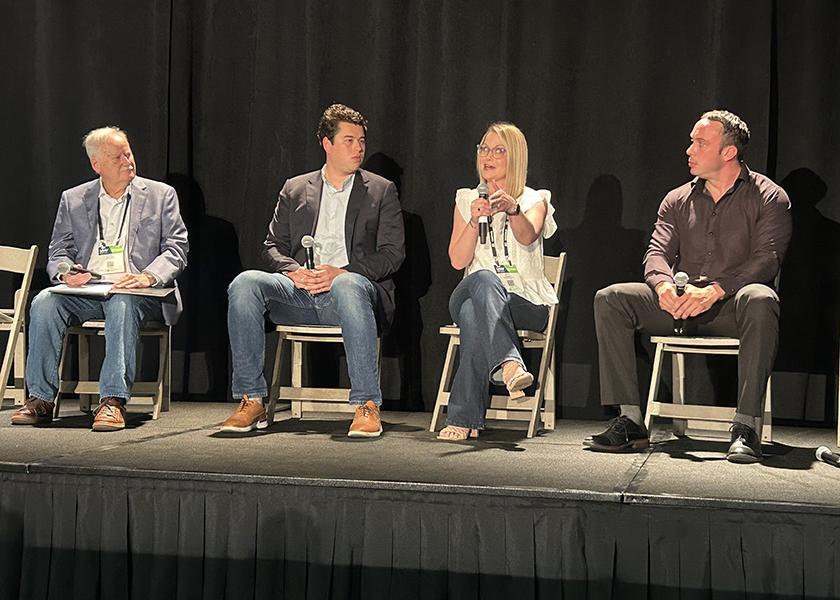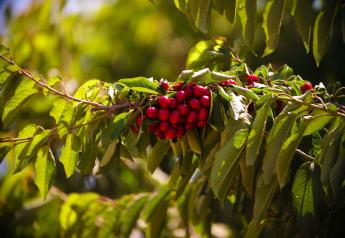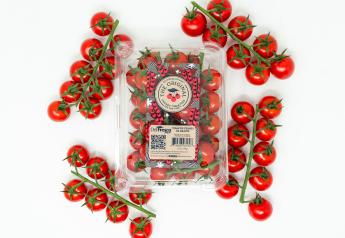Experts discuss what's ahead for the shifting CEA marketplace

PALM DESERT, Calif. — With funding rounds, consolidations and bankruptcies, it’s been a challenge to keep tabs on indoor ag winners and losers through the first two quarters of 2023. Despite the increasingly frequent corporate shakeups making headlines, all it takes is a quick tour of your neighborhood produce department to see shining examples of gorgeous leafy greens and fresh produce grown indoors.
Controlled environment agriculture companies are still making it to market, but there’s a tectonic shift underway.
Recently, a group of experts spanning the fresh produce supply chain cut through the chatter and offered perspectives on where the movement is headed and how to make sense of the CEA market now.
Scott Wiggins, produce director at Lazy Acres and New Leaf Community Markets, along with Molly Tabron, director of supply for Robinson Fresh, and indoor greenhouse grower Little Leaf Farm’s director of sales and planning, Chris Sellew, joined moderator and CEA Alliance President Tom Stenzel in a panel discussion May 20 at the recent West Coast Produce Expo at the JW Marriott Desert Springs Resort & Spa.
Where CEA market share can grow
“When you look at CEA across the country, it's about 2% of the overall salad category nationally,” Sellew said. “Now in New England, that number jumps up to almost 15-20% of the overall package salad market.”
To expand the CEA marketplace, Sellew said, the goal is to “literally just replicate the type of [New England] market share as we move towards new regions.” Once CEA-grown fresh produce starts commanding 15% to 20% of the marketplace, then can it command its own category, he added.
Despite the big jump, Sellew believes this rapid growth is possible.
“In 2015, the Northeast market was probably less than 1-2% and in just seven years were able to gain close to 20%,” Sellew said. “This shows that there is room on the salad wall for an entire CEA category.”
Robinson’s Fresh’s Molly Tabron was less convinced that indoor-grown lettuce will someday command its own category.
Related news: Seen and heard at West Coast Produce Expo — Part 1
“When I think about the consumer buying the product, it's the same eating occasion, right?” she said. “As an industry, you got to think about the consumer and how they're shopping, relating and connecting with [the product].”
While most consumers don’t understand the difference between field grown and indoor grown, she continued, the retail space allows companies to tell the story and educate the consumer.
“The way that we have done this [at Little Leaf Farms] is through our packaging," said Sellew of Little Leaf Farms. "We say we're ‘greenhouse grown, pesticide free,’ and we’re exploring things like putting a QR code on the package, for example.”
“At the end of the day, there's a lot of excitement around introducing new products and new items. All of us in the produce industry understand CEA … but a lot of our customers are just now starting to learn what it is, what it's all about and what the benefits potentially are,” said Wiggins of Lazy Acres. “I think it's going to continue to go in that direction, and we're glad to help educate the consumer as to what the CEA category involves.”
Tabron of Robinson Fresh thinks retail markets are just one piece of the puzzle to expand the market reach of CEA-grown fresh produce.
“If we want to continue to expand and reach more households, we’ve got to expand into that foodservice space too,” she said. “Part of our responsibility as an industry is to make sure that we're doing the right thing and we're continuing to meet our customers where they want to be met.”
Highly differentiated salad
What’s more, Tabron believes that consumers are looking for CEA-grown lettuce to address sustainability in a meaningful way.
“Robinson Fresh does a lot of primary research, and we received some of the initial findings back from a CEA study trying to understand what consumers were interested in and different ways to grow," she said. "One of the things that they said quite loudly was that 72% said that they felt it was it was [the] retailer and foodservice company's responsibility to be purchasing things in a more sustainable way.”
Is competing with the organic category the way forward?
“The organic label has garnered so much traction over the past 20 plus years, it's going to take some time for the CEA product [to be competitive], although it is pesticide free and there are a lot of benefits to growing in that style,” Wiggins said. “It's still going to take some time for customers to be willing to go with the CEA product over that organic product — that's what we're seeing at the store level.”
“Organic is only 6% of the volume sold at retail,” Tabron added. “It's not that it's not a meaningful share; it certainly is, but I think the notion that we're trying to fight for that small portion of our volume in the organic or indoor growing formats is [that] it's been that way simply for necessity.”
As companies figure it out, it is more expensive to grow in the CEA model, therefore making the cost of the product more expensive, she continued.
“There's a subset of consumer that's willing to pay more for that. It's funny, though, because even in the same survey, consumers say they're willing to pay for it, but two-thirds also say that they've already felt the squeeze of the economy and inflation on their purchasing power,” she said.
In Tabon’s view, the solution isn’t fighting for the organic category’s 6% market share volume, but instead finding new ways to bring an accessible product to market.
“One of the things that we really got to focus on is how do we continue to innovate and bring that cost down,” she said. “How do we then expand that so it's more accessible to a broader portion of the population?”
Growing the movement means thinking beyond your business
“We need to continue to tell the story and help educate consumers, which I think is also something that we as retailers can play a part in,” Wiggins said. “And I think continued innovation is another piece. There's a lot of commodities being grown now, but I think as we get into some of the more exciting commodities, whether it’s unique berries varieties or items that are more promotable … I think that will really increase the amount of impact that CEA can have at retail.”
When it comes down to ensuring a thriving CEA movement into future decades, the panelists agreed that the entire fresh produce supply chain would be more successful if they worked together to champion this relatively new and novel way to grow fresh leafy greens, fruit and vegetables.
“It requires all of us to think outside of our own businesses,” Tabron said. “On the retail or foodservice side, [that means] trying to understand how products are grown and how they may be different from field grown right now in terms of food safety and retail specs.”
Being open to trying out some different product specs and differences in qualities, like crunch or size, would go a long way to supporting CEA companies, she continued.
“And on the flip side, CEA companies could start to think about the priorities of their customer’s customer,” Tabron said. “Being flexible and open to trying some new and different things would go a long way. One of the conversations that we have a lot [at Robinson Fresh] is around the products that are grown; just because you can grow it, doesn’t mean you should.”
At the end of the day, thinking about the business more holistically rather than an item-by-item approach would benefit growers and the CEA industry as a whole, she said.







